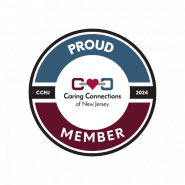What to Expect in Your Clinical Trial
Phone-Screening:
You will receive a phone call from your local GMI site. In this phone call you will be asked questions to further determine whether you are a qualified candidate. After the determination is made that you are a good candidate you will be scheduled for a pre-screening visit.
Pre-Screening Visit:
This will be your first in-clinic visit. At this visit the team will perform initial assessments with you to determine the severity of your condition and your eligibility to participate in our trials.
Screening Visit:
At your next in-clinic visit, the team will perform initial assessments with you. Most studies will require our qualified staff to perform an Electrocardiogram (ECG) and blood work at this visit. All your assessments will be sent to the trial sponsor for approval.
Baseline Visit:
If sponsor approved, the baseline visit is where you will be randomized into the trial. Randomization is computer generated by the study sponsor and in most cases is double-blinded. A double-blinded study means that neither you or the Study Coordinator knows whether you are on the treatment or placebo. During this visit you will also do some of the assessments that were preformed during the screening visit.
Follow-Up Visits:
The number of visits and the length of the trial varies greatly from sponsor to sponsor. We do our best to work around your schedule to make these visits as easy as possible. Most follow up visits include assessments on how the treatment is preforming for you and how you have been feeling on the medication. You will also do evaluations on how your condition is improving with the addition of the medication. You may have routine bloodwork done as well.
Post-Conclusion Visit:
Once you have completed the trial you will be asked to come in one last time to the office for assessments and blood work. This appointment is to make sure that you are doing well after completion of the trial and how your condition has been since you stopped the treatment.
Open Label Extension:
Most trials have what is called an open label extension which is when you can continue the study treatment if you feel that the treatment has improved your condition. The objective of an open label extension is to determine the long- term effects of the treatment on the condition. When you enter the open label extension period it is likely that the trial period is significantly longer than the trial you first participated in. This part of the trial usually has more spaced out follow up visits when compared to the initial trial.


